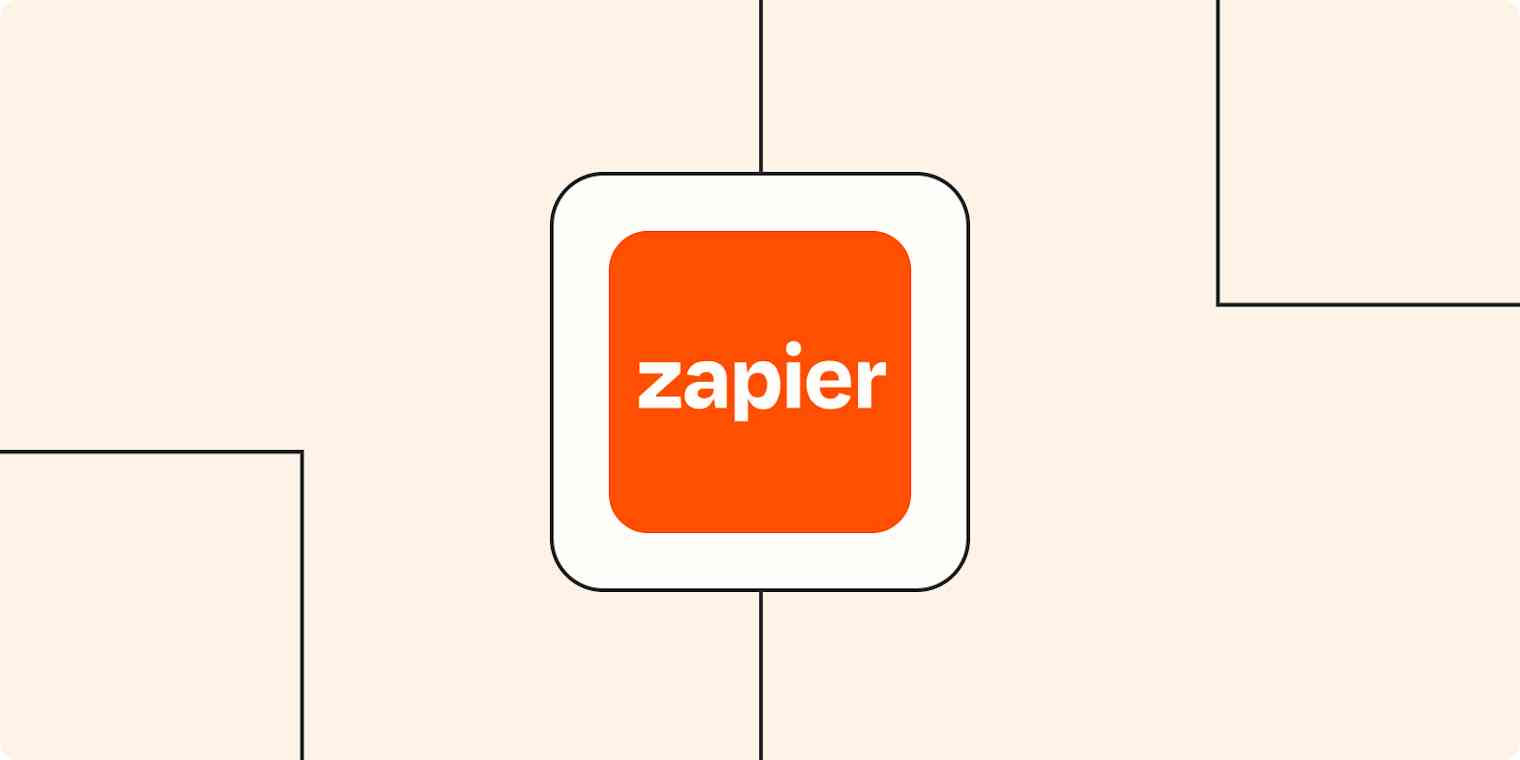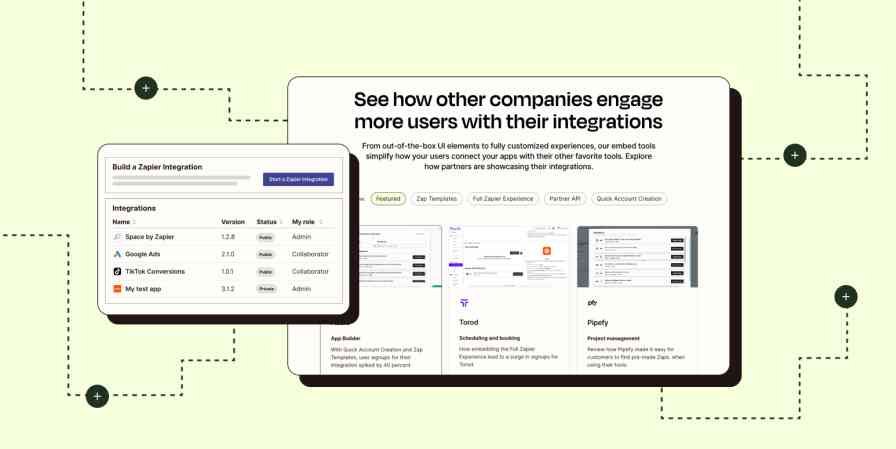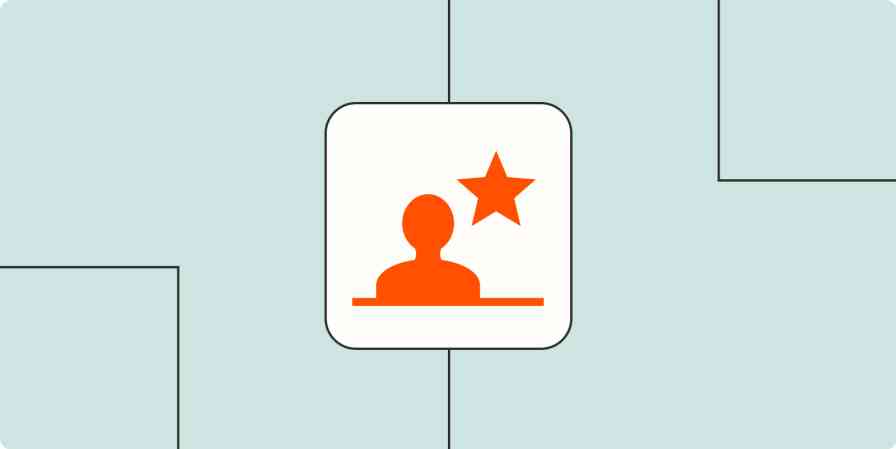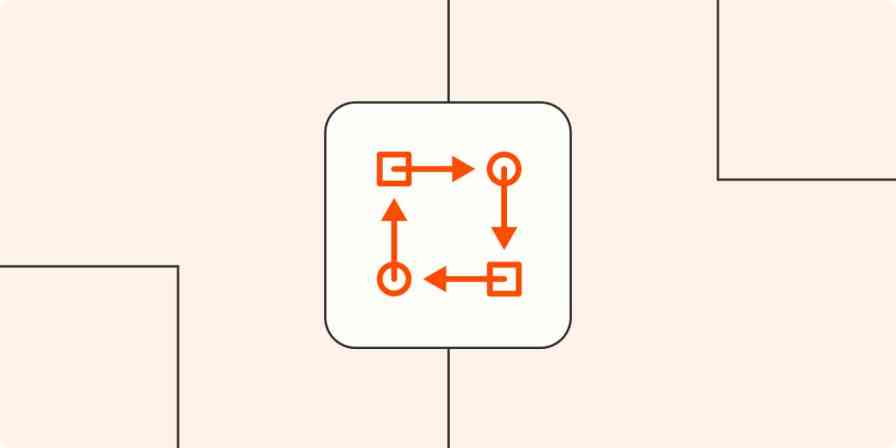Zapier's Partner API is your best embed option if you want to have complete style control over a user's experience with Zapier within your app.
Essentially, it lets you customize how you present Zapier within your product without sacrificing your app's look, feel, and flow. Think of it as a native Zapier integration, helping you showcase your best Zapier-powered workflows where it's most helpful to your users (within the flow of your tool).
Tool: Zapier's Partner API
Resources needed: Product, design, and engineering
Length of execution: Approximately 1-2 months depending on the complexity
To get started: Check out our partner documentation. If you already have an app on Zapier, retrieve your API key from the developer platform.
Other solutions: Try the JavaScript widget, or power your app marketplace with Zapier listings for a lightweight alternative
Harnessing the power of your Zap templates through the API
Like with the JavaScript Widget, Zap templates are the building blocks of the Partner API's embedded experience. But Zapier's Partner API does more than just fill the gaps between Zapier and your app—it also empowers your product to perform tricks you never thought possible.
With Zapier's Partner API, you can:
Brand away. Access raw integration details (such as app names, descriptions, and links) so that you can format and style your Zap templates however you like on your own integration page. Logos, labels, and metadata for each integration are pulled in dynamically. (You needn't lift a finger.)
Show off your Zaps. Showcase all your Zap templates (your most popular, pre-made workflows), so your users can quickly search for, locate, and launch the one they need without ever leaving your product UI. Plus, these will automatically update in real time based on their level of popularity and release date.
Set your users up for success. To help your users, you can streamline Zap setup by pre-filling custom fields. That way, once your users log in, they can start using Zaps right away while staying on your site. (They'll thank you for the ease.)
Keep them coming back. Present your customers with a history of their current Zaps (or any Zaps in the making) from within your product.
Think big. Get a list of all the apps available in Zapier's app directory to power yours. That way, you show your users all the potential connections. (The possibilities are endless.) Plus, once you've built in this API, your integration directory will expand automatically as Zapier adds new apps.
Endpoints of the Partner API
Extend the apps displayed in your marketplace by tapping into the GET/v1/apps endpoint of the Partner API. Use this to request apps from Zapier's library that can be paired with your CRM. When you use this:
Your own app won't be returned.
Zapier's built-in tools won't be returned.
The most popular apps are displayed first.
GET /v1/zap-templates
This calls all the Zap templates for your integration. By default, the API will return the first five templates, but you can customize the returned list by using parameters in the query string.
GET /v1/zap-templates/me
This returns all of the Zap templates a specific user has created for the given app. Using the user access token, it only returns the Zap templates that include your app through the Client ID.
GET /v1/zaps
This returns all Zaps from a user's account that include your app. This enables users to see which Zaps they've created with your app and manage them without having to hop over to Zapier.com.
Authentication via the Partner API
There are two ways to authenticate with the Partner API:
Your application's client_id, which you'll receive once you're approved for access to the API
A user's access token
Our OAuth option fulfills a feedback loop that feels more tightly integrated. Customers can actually see their Zaps within the non-Zapier tool. These two services, used in tandem, can "close the loop" to bring integration data from Zapier back into your application. Which authentication method you should use depends on which endpoint(s) you are using, which you can review in detail here. Or, continue reading to see examples.
Building Zapier into your interface: Examples
Your Zapier integration grants your customers access to thousands of other apps, many of which they may already use. This is a huge benefit, as customers who connect their favorite apps using Zapier are more likely to use your product longer and are also more likely to upgrade their account with you.
"Zapier is the #1 most popular integration in Pipedrive's App Marketplace of 200+ apps, with over 10% of our customers having installed it. We actively invest in our partnership with Zapier to better serve the tens of thousands of customers who depend on it to automate tasks and close deals quicker." - Maksim Borissov, Head of Ecosystem, Pipedrive
That's why building Zapier straight into your interface (and demonstrating that you can support the workflows they want) is a great way to promote the available options. Here are a few examples of partners (operating within the marketing automation and CRM space) doing exactly that:
Noticeable
Partner API endpoints/features used: GET /v1/zap-templates?limit=10 & GET /v1/zaps
Noticeable, a newsfeed and changelog app, uses Zapier's Partner API to help their users discover popular automated workflows and configure Zaps directly within their product. In the app's settings, users see a list of popular automated workflows powered by Zapier:
![[Partner-API-overview]-[1]-[Noticeable]](https://images.ctfassets.net/lzny33ho1g45/6GWd3YQJ0wiMkkqoUfgFqR/84bda1f60edff4107d7a11f8a2193f37/-Partner-API-overview---1---Noticeable-.png?w=1400)
Once users click on the Authenticate your Zapier account button, their existing Zaps are also displayed. From there, users can manage these templates directly from within Noticeable's product.
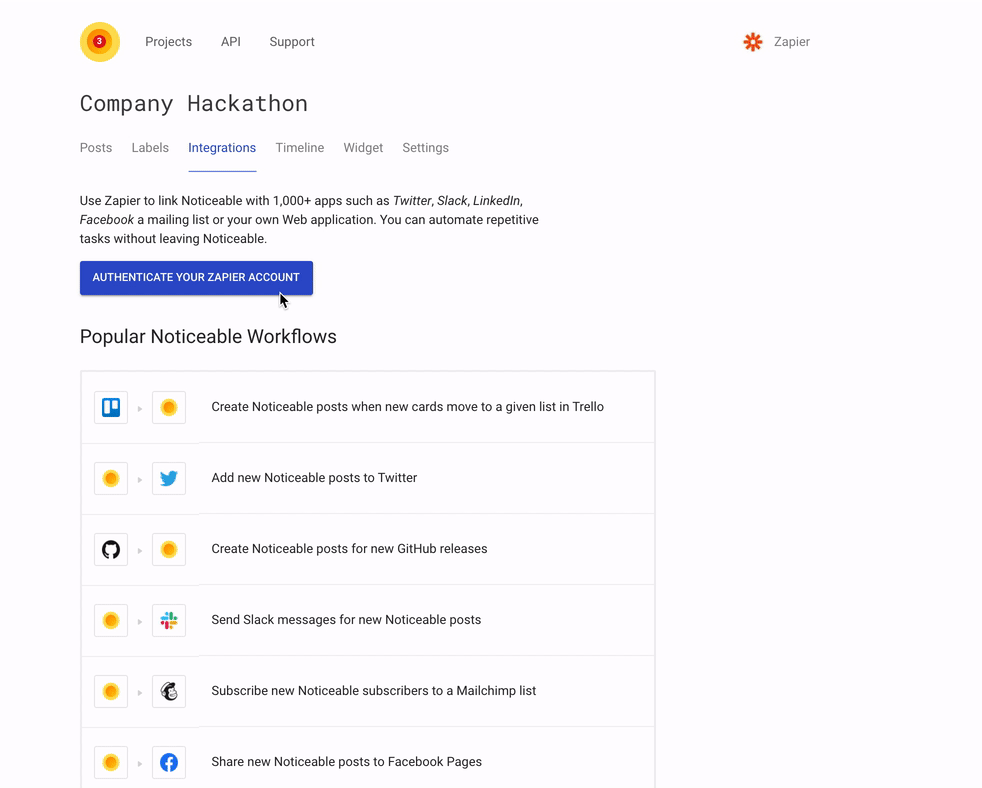
Tip: You could also bring the editor directly into your app with the "Edit this Zap" button for all Zaps that are pulled in.
GetResponse
Partner API endpoints/features used: GET /v1/zap-templates & GET /v1/zaps & Embed via an iFrame to edit Zaps directly on GetResponse
GetResponse, an email marketing platform, uses Zapier's Partner API to display its own tab of Zapier-powered workflows.
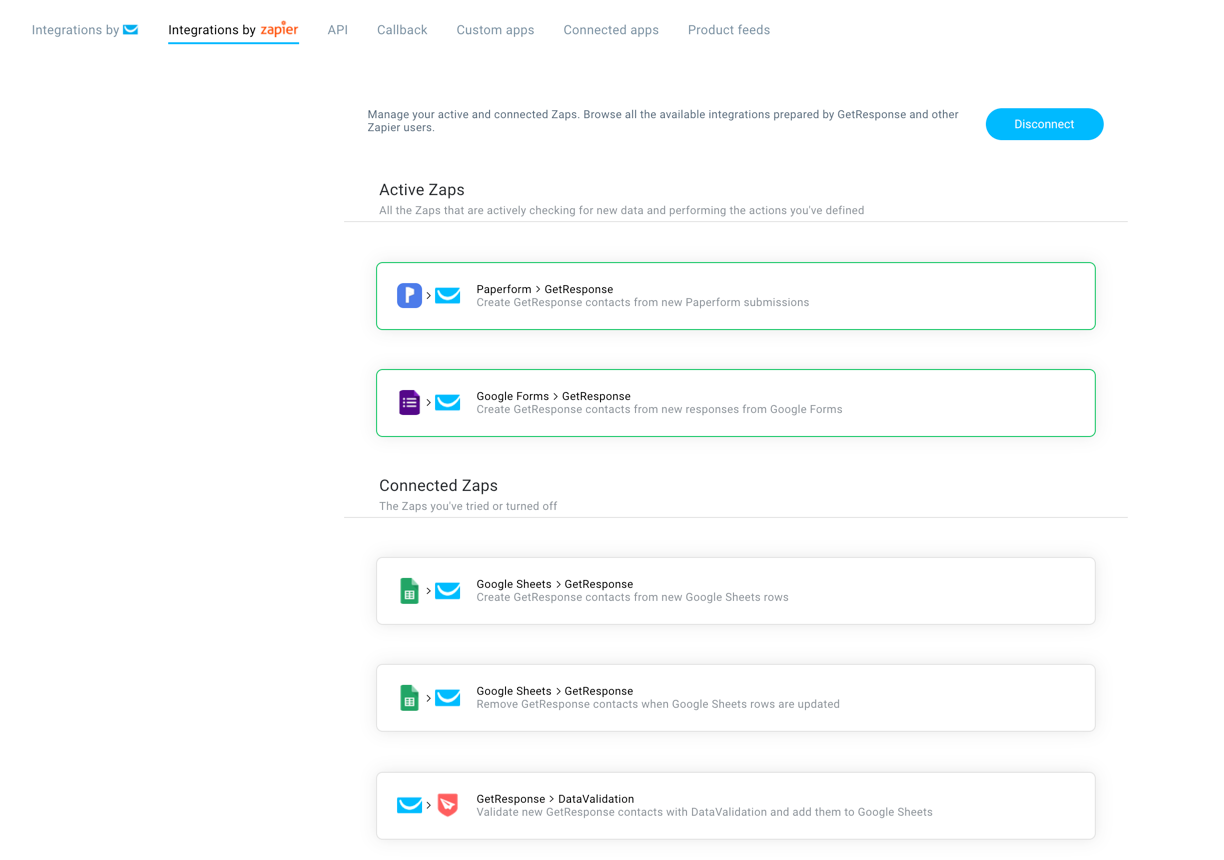
As you can see, it fits seamlessly and stylistically into their own branding. When a GetResponse user clicks on this tab, they'll pull up a list of their active (and inactive) Zaps.
For general inspiration, GetResponse also displays a list of popular Zap templates (with app and workflow descriptions). When a user hovers over these examples, the UI encourages them to set up the Zap.
![[Partner-API-overview]-[4]-[GetResponse]](https://images.ctfassets.net/lzny33ho1g45/2x9HEoUYqFoxemqDgisLlu/c235d3737a481980a78a85737fd04be8/-Partner-API-overview---4---GetResponse-.png?w=1400)
Once they authenticate their Zapier account with the embedded editor, users can then turn the Zap on with just one click.
![[Partner-API-overview]-[5]-[GetResponse]](https://images.ctfassets.net/lzny33ho1g45/6KQQ2wyba4efsgNDprokih/57777701ec52ba974e20148def54cb6e/-Partner-API-overview---5---GetResponse-.png?w=1400)
WhatConverts
Partner API endpoints/features used: GET /v1/zap-templates & GET /v1/zaps & Embed via an iFrame to edit Zaps directly on WhatConverts
WhatConverts—a CRM that tracks which marketing channels generate conversions from phone calls, web forms, and chat—uses Zapier's Partner API to dynamically display hundreds of their Zapier-powered workflows (alongside their native ones).
![[Partner-API-overview]-[6]-[WhatConverts]](https://images.ctfassets.net/lzny33ho1g45/4ziyQxL3VkCsmi3o3M2ex3/73d587400ed6e0415f4248042029f373/-Partner-API-overview---6---WhatConverts-.png?w=1400)
The way that WhatConverts lays out their Zap templates makes it easy for users to search for, set up, and manage hundreds of Zaps. When a user selects a Zap template, it opens the embedded editor in a pop-up window.
Once their Zaps are turned on, users can manage them from within the WhatConverts dashboard.
You can find out more about the Partner API in our partner documentation, or if you already have an app on Zapier, request an API key in your developer dashboard.
Want to reduce churn and accelerate growth as an automation tool on Zapier? If you're here to join Zapier's Partner Fast Track program, let us know which embed tool you're planning on using with the form below. That way, we can start unlocking your perks.
